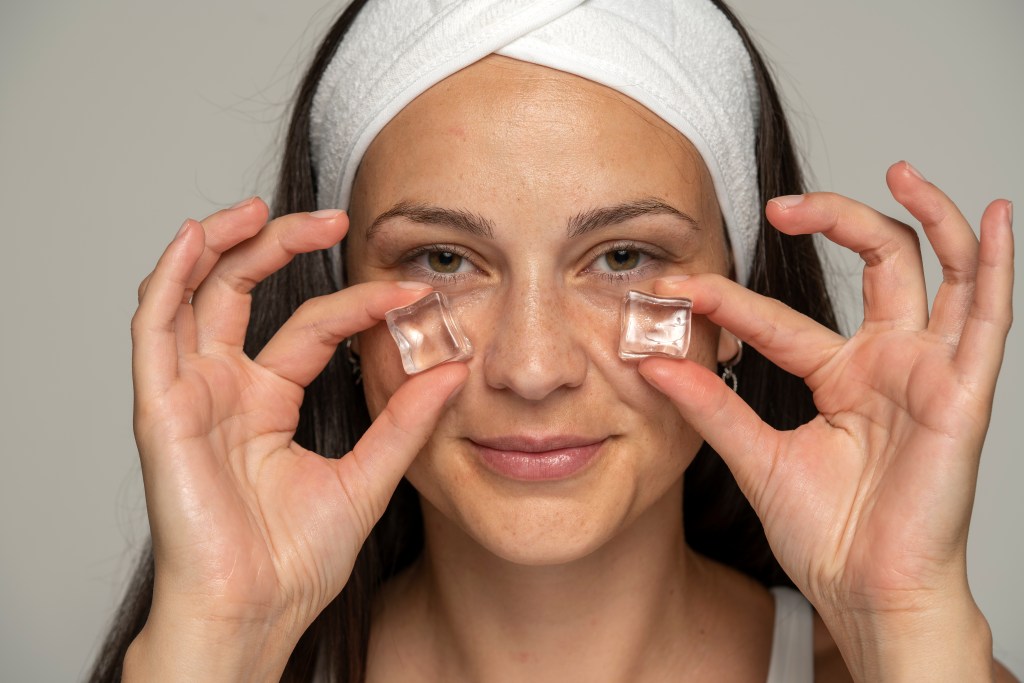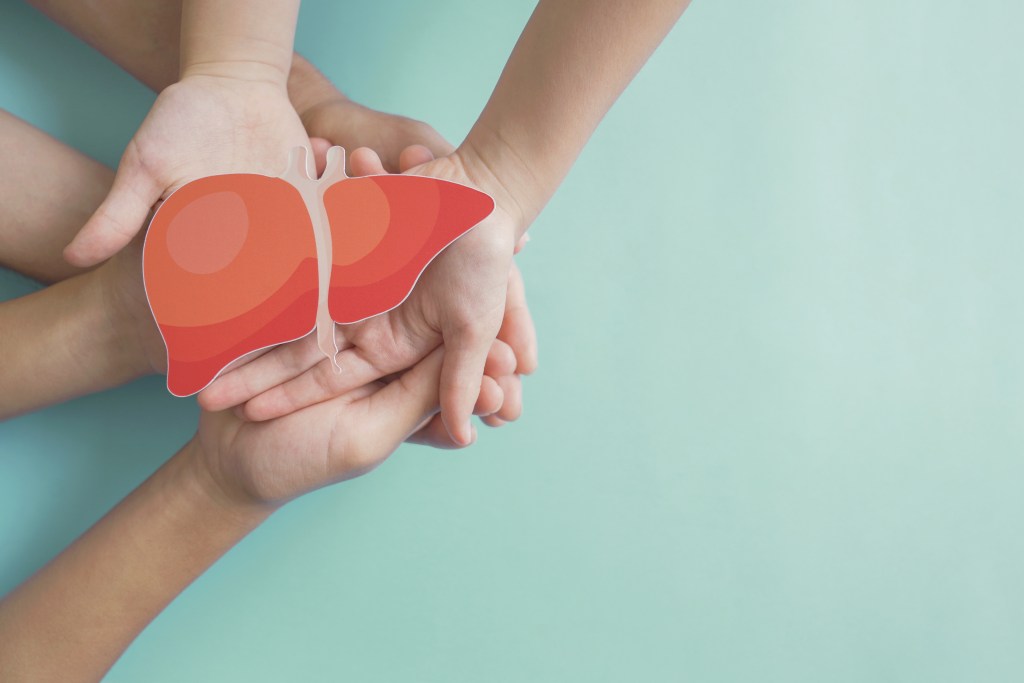Dark circles under eyes are a common issue that can influence how you look and feel. While often attributed to genetics or lack of sleep, these under-eye shadows may reflect deeper health concerns.
Factors such as insulin resistance, nutrient deficiencies, chronic stress, and liver dysfunction can all contribute to dark circles, making them a potential indicator of underlying imbalances rather than a purely cosmetic problem.
Explore the various causes of dark circles and discover natural strategies for reducing their appearance while improving overall skin health.
What causes dark circles under eyes?
Dark circles under the eyes, which are also known as infraorbital dark circles or periorbital hyperpigmentation (POH), can develop due to a combination of internal and external factors.
While genetics and aging can increase the likelihood of developing dark circles, several other factors can also contribute to their appearance.
“Hyperinsulinemia, which typically stems from insulin resistance, is one of the biggest causes of dark circles under the eyes,” explains Dr. Berg.
This condition is frequently triggered by diets high in refined carbohydrates and sugars, leading to elevated insulin levels that can promote fluid retention and excess pigmentation.
According to data published in the Journal of Clinical Endocrinology and Metabolism, approximately 42 percent of young adults may experience insulin resistance, which can manifest in various systemic and dermatological conditions, including dark circles under the eyes.1
A study published in the Indian Dermatology Online Journal supports this connection, reporting a clear link between insulin resistance and periorbital melanosis, a type of pigmentation associated with dark circles.2
Several other factors also contribute to a darker skin color around the eyes.
Poor circulation, which may result from sinus congestion, inflammation, or inadequate sleep, can lead to blood pooling around the eyes, which darkens the skin tone and can create dark circles.
Deficiencies in essential vitamins and minerals, especially vitamins C, A, K2, and iron, can also negatively impact skin health and exacerbate the appearance of dark circles.
Additionally, chronic stress can elevate cortisol levels, disrupt sleep patterns, and increase the production of melanocyte-stimulating hormone (MSH), which darkens the skin.
Furthermore, liver dysfunction can hinder the detoxification process, allowing toxins to accumulate in the body. This can lead to a dull complexion and worsen the appearance of dark circles around the eyes.
Dark circles may also be shadows cast by puffy eyelids, often caused by seasonal allergies or intolerances.
Finally, lifestyle factors, including smoking, dehydration, high sodium intake, and alcohol consumption, can also worsen fluid retention, making dark circles even more noticeable.
Watch the video below to learn more about what causes dark circles under the eyes.
7 natural remedies for dark circles under eyes
Dark circles can be frustrating to deal with, but luckily, several natural remedies are available that can help improve their appearance and boost your overall well-being.
Here are seven strategies to help improve dark circles.
1. Follow a nutritious low-carb diet
Insulin resistance has been linked to inflammation and poor circulation, both of which can contribute to the appearance of dark circles.
To improve insulin sensitivity, consider adopting a low-carb, nutrient-rich diet such as Healthy Keto®. This diet prioritizes high-quality whole foods, including pasture-raised and grass-fed meats, plenty of healthy fats, and various nutritious non-starchy vegetables.
By avoiding processed and carb-heavy meals, Healthy Keto is an invaluable strategy for stabilizing blood sugar levels, lowering inflammation, and reducing the risk of hyperinsulinemia.
This can enhance your overall health and help minimize dark circles, resulting in a more even and radiant complexion.
2. Stress management
Chronic stress raises cortisol levels, disrupting hormonal balance and increasing the risk of dark circles under the eyes.
Move towards eliminating sources of stress in your environment and practice more stress-reducing activities such as stretching, deep breathing exercises, or long walks in nature.

3. Apply cold therapy
Cold compresses are a quick and effective remedy for reducing puffiness and inflammation that can lead to dark circles. The cold reduces blood flow to the area, decreasing puffiness and lightening dark circles by constricting blood vessels and reducing fluid accumulation.
To apply cold therapy, soak a cloth in cold water, wring out the excess, and place it over your closed eyes for 10 to 15 minutes.
You can also use sliced chilled cucumbers or chilled green tea bags, which contain antioxidants and help reduce inflammation and combat free radical damage linked to dull complexion and dark skin around the eyes.
4. Focus on optimal nutrition
Vitamins and minerals play key roles in blood vessel integrity, collagen production, oxygen delivery, and hormone balance, all of which are crucial for an even skin tone.
While vitamin K2 is essential for supporting blood vessel health and preventing vascular leakage, vitamin C supports collagen production, which helps skin maintain structure and elasticity.
Natto and grass-fed cheese are good sources of vitamin K2, and vitamin C is abundant in foods like bell peppers, tomatoes, and sauerkraut.
Iron, found in red and organ meats, improves oxygen delivery to tissues, preventing the bluish discoloration common with dark circles.
In addition to these essential nutrients, foods rich in potassium and magnesium, such as avocados, spinach, and pumpkin seeds, can support relaxation, enhance fluid balance, and improve the skin’s overall appearance.
Certain amino acids, such as taurine and L-theanine, can help improve overall blood flow, which may enhance skin tone and reduce discoloration.
Taurine is found in shellfish, dark poultry meat, and seaweed, while L-theanine is primarily found in green tea and black tea. Incorporating these foods into your diet may contribute to healthier, more even-looking skin.

5. Support liver health
Supporting liver health by consuming plenty of liver-supporting foods, such as cruciferous vegetables, beet greens, and parsley, helps your body process toxins more efficiently, thereby promoting clearer, more vibrant skin.
6. Utilize natural topicals
While topical applications may only offer temporary relief and are unlikely to correct the underlying causes of dark circles, they can soothe and brighten the under-eye area.
Aloe vera, cucumber slices, green tea bags, and niacinamide-based creams can help reduce inflammation, tighten the skin, and inhibit melanin production linked to dark circles.
Kojic acid and vitamin C-containing topical applications can also help inhibit melanin production and strengthen blood vessels, which helps improve skin texture.
In addition, rosehip and almond oils can provide essential fatty acids directly to the affected area, deeply nourishing the delicate skin and enhancing its texture and elasticity.

7. Improve circulation
Encouraging better circulation prevents blood from pooling in the tissues under the eyes. Gentle lymphatic drainage massage around the eyes can help remove accumulated fluid.
Start by placing your fingertips or a messaging tool near the inner corner of your eyes and move outward along the orbital bone toward the temples. Ideally, use your ring finger to avoid applying too much pressure.
Over time, this can help promote a more even skin tone and reduce the appearance of dark circles and puffiness under the eyes.

Tips for preventing dark under-eye circles
To prevent dark circles, it’s important to address lifestyle factors that potentially contribute to circles under your eyes.
Getting enough sleep is essential, as sleep deprivation can raise cortisol, which can worsen puffiness and discoloration under the eyes. Ideally, aim for 7 to 9 hours of rest each night to allow your body time to repair and rejuvenate.
Prioritize sleep hygiene by eliminating artificial light sources before bed, such as cell phones, TV screens, or streetlights, which can disrupt your circadian rhythms and prevent restful sleep.
Additionally, avoid snacking or eating within three hours of bedtime, a common trigger of sleep-related problems.
It’s also crucial to consume plenty of nutrient-rich foods to obtain antioxidants and essential vitamins and minerals such as vitamin C, potassium, and iron. These include leafy green vegetables, avocados, berries, grass-fed meats, and wild-caught fatty fish.
Incorporating regular physical activity into your daily routine helps flush out toxins, support better circulation, and stabilize blood sugar levels.
Activities such as walking, stretching, or even outdoor physical work or gardening can reduce stress and promote better sleep, two key factors for reducing dark circles.
Avoid harmful habits such as smoking, alcohol consumption, high sodium diets, and ultra-processed foods, all of which can trigger inflammation and can significantly contribute to the appearance of dark circles.

When to talk to your doctor
Consult your doctor if your dark circles don’t improve with lifestyle changes, are accompanied by other symptoms such as fatigue, swelling, vision changes, or appear suddenly and worsen rapidly.
Additionally, if you plan to undergo medical treatments such as chemical peels or laser therapy to treat dark circles, a doctor can help provide personalized advice on suitability and potential risks.

Key takeaways
Dark circles under eyes often indicate underlying health issues such as insulin resistance, poor circulation, and liver congestion.
Supporting the body with a nutritious low-carb diet, stress management, and adequate sleep can significantly reduce the appearance of dark circles.
Additionally, implementing targeted natural remedies such as cold compresses, tea bags, and topical applications can help promote healthier-looking skin around the eyes.
FAQ
1. What is the main cause of dark circles under eyes?
A combination of poor dietary habits, lack of sleep, chronic stress, and underlying health conditions such as sluggish liver function and insulin resistance are some of the most common causes of dark circles under the eyes.
2. What deficiency causes dark circles?
Iron deficiency, especially in children, can contribute to dark circles. In addition, deficiencies in vitamins C, K, or D, can also affect the appearance of the skin beneath the eyes.
3. How do you get rid of dark under-eye circles?
Following a low-carb, nutrient-rich diet, prioritizing quality sleep, and practicing stress management are excellent strategies to address common underlying conditions that contribute to dark circles.
In addition, natural topical applications such as cold compresses, green tea bags, and aloe vera gel can help reduce inflammation, improve circulation, and support overall skin health.
4. Can dark circles go away?
Yes, with proper care and lifestyle changes, most cases of dark circles under the eyes can improve over time.
5. Are dark circles related to the liver?
Yes, dark circles can be related to the liver. Poor liver health can cause toxins to build up, which can contribute to a dull complexion and skin discoloration around the eyes.








